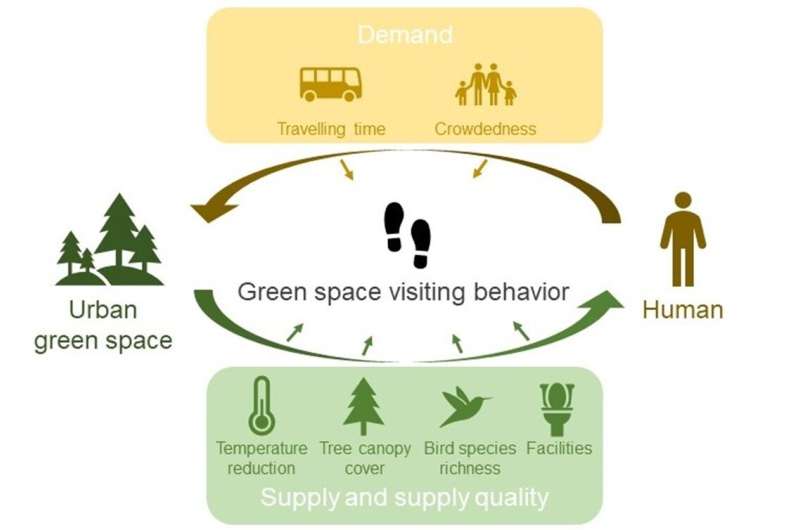Incorporating users' adaptive behavior in urban green space planning

National University of Singapore ecologists have developed a valuation framework that incorporates users' demand for green urban spaces to assess the benefits provided by their ecosystem services (ES).
Urban green spaces contribute a variety of ES that are relevant to human well-being and mental health, such as air purification, noise reduction, cooling and recreation. The value of ES is typically presented as static '"snapshot" maps, capturing the parameters in a given time frame. However, static maps have limited value for urban planning as the ES value is also determined by the interplay between the supply and demand of such services. These influencing factors may vary over time and are usually dependent on human behavior.
The research team led by Associate Professor Roman CARRASCO from the Department of Biological Sciences, National University of Singapore showed that incorporating human behavior in the valuation of green spaces results in a different set of optimal locations for urban planning purposes.
Using Singapore for their study, their simulation results show that, after accounting for residents' visiting behavior towards green spaces, their optimal locations shifted from areas with high residential density to those located near the eastern central part of Singapore, which still offer a short traveling distance for the residents. Adding in an element associated with visitor experience, termed as "crowdedness," the optimal regions for locating green spaces change slightly to divert the flow of visitors to other parts of the country to prevent losses from "crowdedness" at these spaces.
The modeling framework developed in this study provides a more comprehensive approach for estimating the change of ES by taking into account the adaptive behavior of users requiring such services. The researchers used techniques such as choice experiment, travel cost method and spatial simulation to estimate changing demands from urban users. The choice experiment provides an estimation of the preference of users towards certain ecosystem attributes.
It showed that ambient temperature reductions provided by green spaces are valued by users but this value decreases when they need to travel further distances to enjoy them. If the green spaces are heavily visited and are frequently crowded, their value also reduces.
The first author of the journal paper, Ms. Yan Yanyun said, "The research findings highlight the importance of incorporating human behavior towards green space demand, based on distance and crowdedness, to capture the complexity of human-nature relationships."
Prof Carrasco said, "This study suggests that the adaptive behavior of urban users plays a significant role in determining the value of green spaces in our living environment."
More information: Yanyun Yan et al, Where did the ecosystem services value go? Adaptive supply, demand and valuation of new urban green spaces, Resources, Conservation and Recycling (2022).
Provided by National University of Singapore



















